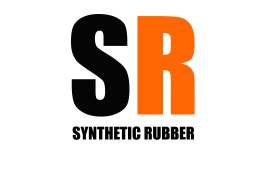Rubber Diaphragm
Category
-
Rubber Sheeting
- Anti Fatigue Rubber Mat
- Check Plate Rubber Mat
- Electrical Insulation Rubber Mats
- EPDM Sheet
- ESD Anti Static Rubber Mats
- Fined Ribbed Rubber Mat
- Latex Sheet | Natural Rubber Sheet
- NBR Sheet
- Neoprene Sheet
- Neoprene Sheet c/w fabric insertion
- Round Stud Rubber Mat
- Rubber Sheet with Fabric Surface | SBR Sheet
- Silicone Rubber Sheet
- Willow Mat | Diamond Plate Rubber Mat
- Rubber Gasket
- Rubber Flexible Joint
- Rubber Fender
- Road Safety Rubber Products
- PVC Curtain Strips
- Anti-vibration Pad
- EPDM Sponge
-
Extrusion
- Custom Made Rubber Extrusion聽
- Edge Trim Door Seal | Self-Gripping Door Seal
- L Shaped Door Packing
- NBR Rubber Cord
- Rubber Container Door Seal Extrusions ( J Shaped)
- Rubber Gate Seal Extrusions
- Rubber Hatch Door Seals
- Rubber P Profile Extrusions
- Rubber Right Angle L Extrusion
- Rubber T Profile Extrusions
- Rubber Tadpole Extrusions
- Rubber Tank Strap Extrusions
- Rubber Wedges Profile Extrusions
- Rubber Weigh Bridge Seal Extrusions
- Square Solid Rubber Strip
- Fastener
-
Molded Products
- Polyurethane Sheets
- PTFE Sheet & Gasket
- PVC Sheet
Rubber diaphragms are flexible rubber membranes, sometimes reinforced with fabric, strategically placed to prevent unwanted transfer of substances between two places by creating a seal. They can be used to separate two gasses, two liquids, or one gas and one liquid that should not mix.
It is a bit of an industry misconception that all rubber diaphragms are thin pieces of rubber. In fact, diaphragms come in a wide variety of shapes and sizes. The thickness depends on how big in diameter the diaphragm is and how flexible you need it to be. At SYNTHETIC RUBBER PRODUCTS, we’ve manufactured 28-inch diaphragms that were ⅛” thick and one-inch diaphragms only millimetres thick.
Diaphragms can be made of a wide variety of rubber materials, depending on final application. Read on to learn more about the benefits of rubber diaphragms and when you should use one in place of a gasket or traditional seal.
HOW AND WHERE ARE RUBBER DIAPHRAGMS BEST USED?
Rubber diaphragms have a wide range of applications, but are most often used in environments where pressure differentials are present. With low fluid permeability and the ability to flex from side to side, rubber diaphragms act as a sealing solution while providing a consistent pressure differential.
Elastomers, and rubber in particular, are a great material to use for diaphragms due to their elastic properties. Rubber diaphragms allow for a wide range of pressure differentials while remaining durable and flexible.


